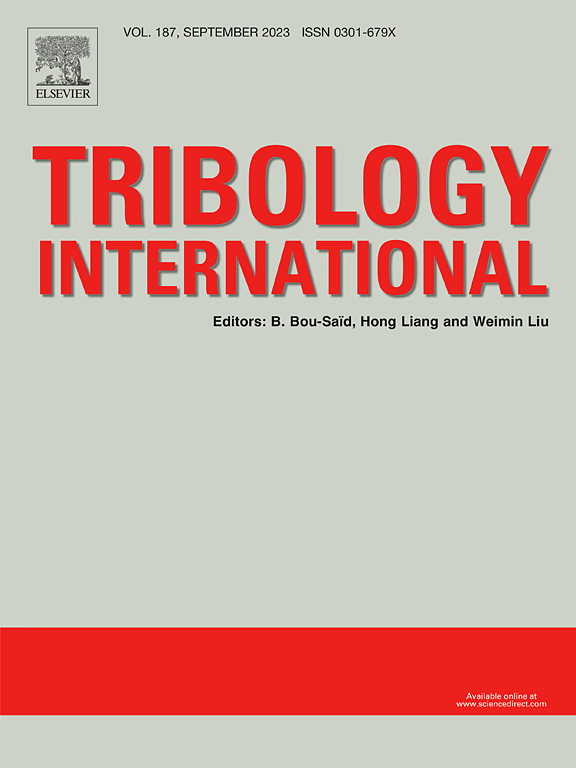长期老化过程中的深海压力对织物增强酚醛复合材料摩擦学性能的影响
IF 6.1
1区 工程技术
Q1 ENGINEERING, MECHANICAL
引用次数: 0
摘要
研究了高达 30 兆帕的静水压力对纤维增强聚合物复合材料(FRPC)摩擦和磨损行为的影响,以及海水吸收、界面结构和机械性能。结果表明,在深海环境中老化后,纤维增强聚合物复合材料的磨损率从 1.53 × 10-6 mm3/N∙m 增加到 3.61 × 10-6 mm3/N∙m,机械强度可逆下降。在高海水压力下,聚合物基体中的裂纹扩展和界面脱粘的共同作用被认为是主要的破坏机制,其特征是树脂模量降低和界面厚度增加。本文章由计算机程序翻译,如有差异,请以英文原文为准。
The effect of deep-sea pressure during long-term aging on the tribological performance of fabric-reinforced phenolic composites
The influence of hydrostatic pressures up to 30 MPa on the friction and wear behavior of fiber reinforced polymer composites (FRPCs) was investigated together with seawater absorption, interfacial structure and mechanical properties. The results revealed that after aging in the deep-sea environment, the wear rate of the FRPC increased from 1.53 × 10−6 mm3/N∙m to 3.61 × 10−6 mm3/N∙m, and the mechanical strength decreased reversibly. The damage mechanism was assumed to be dominated by the combined effect of crack propagation in the polymer matrix and interfacial debonding at high seawater pressures, characterized by a decreased resin modulus and increased interfacial thickness.
求助全文
通过发布文献求助,成功后即可免费获取论文全文。
去求助
来源期刊

Tribology International
工程技术-工程:机械
CiteScore
10.10
自引率
16.10%
发文量
627
审稿时长
35 days
期刊介绍:
Tribology is the science of rubbing surfaces and contributes to every facet of our everyday life, from live cell friction to engine lubrication and seismology. As such tribology is truly multidisciplinary and this extraordinary breadth of scientific interest is reflected in the scope of Tribology International.
Tribology International seeks to publish original research papers of the highest scientific quality to provide an archival resource for scientists from all backgrounds. Written contributions are invited reporting experimental and modelling studies both in established areas of tribology and emerging fields. Scientific topics include the physics or chemistry of tribo-surfaces, bio-tribology, surface engineering and materials, contact mechanics, nano-tribology, lubricants and hydrodynamic lubrication.
 求助内容:
求助内容: 应助结果提醒方式:
应助结果提醒方式:


